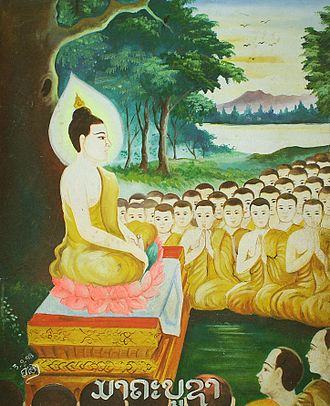Magha: Difference between revisions
From All Skies Encyclopaedia
Magha
No edit summary |
|||
| Line 5: | Line 5: | ||
==Etymology and History== |
==Etymology and History== |
||
The asterism is depicted in temples as a gate consisting of five stars. The brightest one, Regulus, is securly identified across all historical sources. The other four certainly contain γ, and therefore also η Leonis, but whether then ο and ρ, or ζ and ε should be counted towards the group is unknown. |
|||
[[File:Magha Puja.jpg|thumb|Magha Puja]] |
[[File:Magha Puja.jpg|thumb|Magha Puja]] |
||
=== Origin of Constellation === |
=== Origin of Constellation === |
||
The bright star, [[Regulus]], is securely identified across all historical sources; it is the main star (yogatara). |
|||
The nakshatra-asterism surrounding it consists of five fainter stars: γ, η, ο, 31 and ρ Leonis. |
|||
=== Transfer and Transformation of the Constellation === |
=== Transfer and Transformation of the Constellation === |
||
Revision as of 11:47, 9 August 2025
... is an Indian name, used by the Indian Vedic tradition. Most of these names are roughly 3000 years old. They pre-date Hinduism but were taken over by it.
Etymology and History
Origin of Constellation
The bright star, Regulus, is securely identified across all historical sources; it is the main star (yogatara).
The nakshatra-asterism surrounding it consists of five fainter stars: γ, η, ο, 31 and ρ Leonis.
Transfer and Transformation of the Constellation
Mythology
mnemonic tales and cultural significance
Weblinks
References
- References (general)







